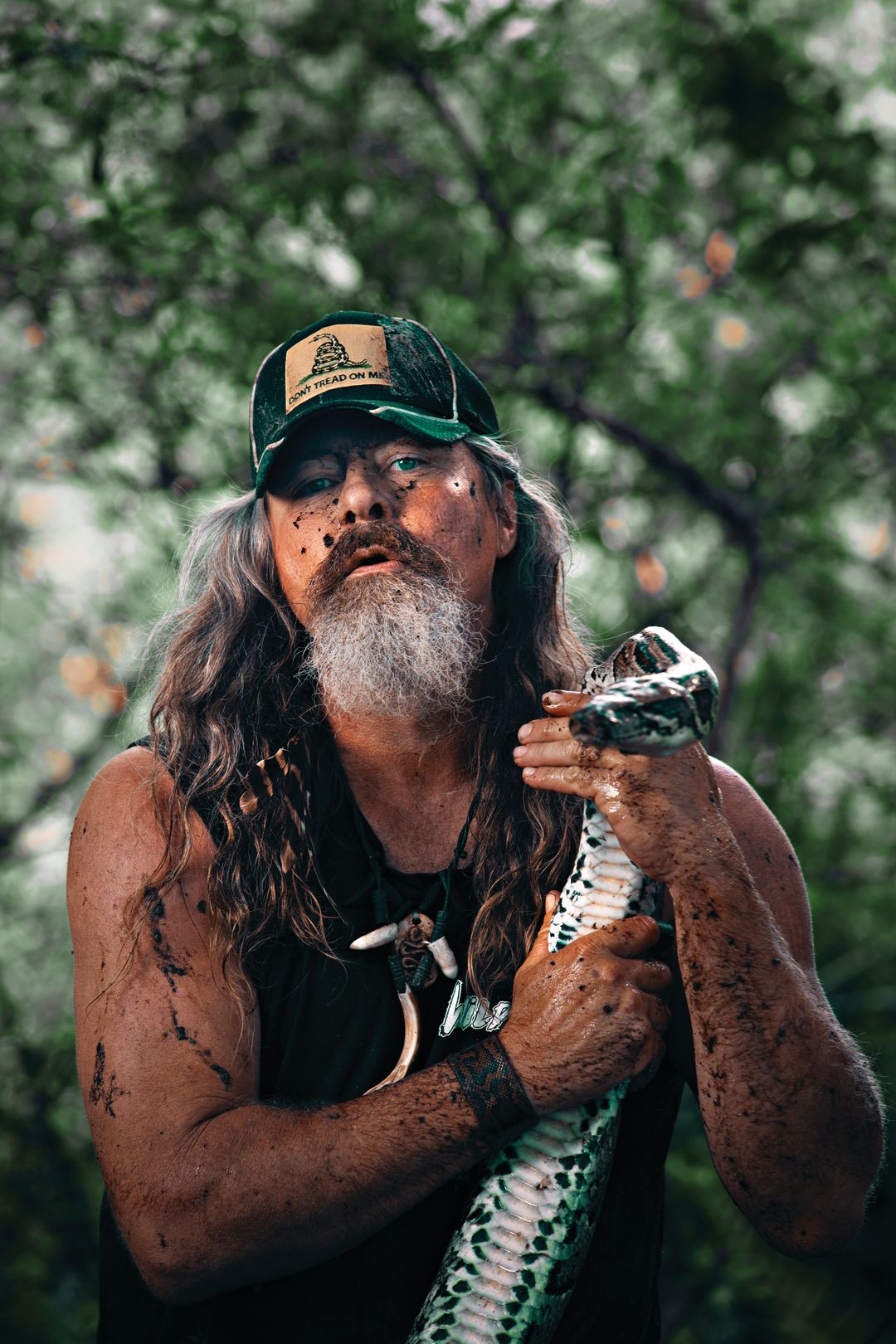Dusty Crum’s Mission Is to Save the Everglades, One Python at a Time

Dusty Crums
Image: Fred Lopez
The wet heat of summer nights in the Everglades brings the snakes out. That’s when Dusty “Wildman” Crum slogs barefoot through this swamp in pursuit of the Burmese python. Between 87 and 99 percent of the Everglades’ mammal populations have disappeared because of the invasive snakes, which now number nearly 300,000 in southern Florida. Since 2013, Crum, Florida’s most famous python hunter, and his team have removed 2,075 of them.
Now you can tag along with 38-year-old Crum, his crew and his snake-sniffing beagle, Riley, as they track, catch and remove snakes on Guardians of the Glades, a television show on the Discovery Channel, which debuted May 28.
Growing up off Fruitville and Cattlemen roads, the young Crum caught small garter snakes. “Never in my wildest dreams did I think when I grew up I would be catching 17-foot pythons in the Everglades,” he says. National Geographic got Crum into snake hunting in 2013, when it filmed the first annual Python Challenge, a 30-day competition where hunters camped out in the Glades to see who could catch the most snakes. Crum’s team came in second. Now, he says, “I’m addicted to the feeling of it.” And TV producers can’t seem to get enough of him either. He’s taught Ozzy Osbourne the art of snake hunting on A&E and battled gators on the History Channel’s Swamp People.
Crum, who only wears shoes when he needs to go someplace nice, does not hold ill will towards these invaders. “Something like 95 percent of Americans are scared of ’em,” Crum says. “But they’re beautiful creatures, just doing what God created them to do. I just care more about the future of our native wildlife.”
His least favorite part of the hunt is euthanizing the snakes. Hunters used to bring them back alive and have the Florida Fish and Wildlife Conservation Commission take care of them. Now, hunters are required to kill them in the field. Crum usually finds someone else to do it. He says he was never a hunter. “I’d go out in the woods and hunt with a camera instead of a gun,” he says.
None of the snake goes to waste, though. “I want to be respectful of the snake,” says Crum, so he eats the meat. “It’s like gator, but less fishy.” His Cambodian neighbor uses the snake guts for traditional medicine. “It works,” Crum insists. And he turns the snake hides into textiles: “It’s a beautiful leather.”
For Crum, it’s less a fashion statement than a conversation starter. “When I pull my snakeskin wallet out at the gas station, everyone is like, ‘Whoa, what is that?’ I tell them about the snakes causing great damage to our ecosystem. Most of them don’t even know.”



